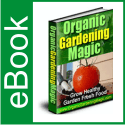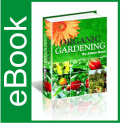Growing a Veggie Garden
Growing a Veggie Garden
Article by Steve Churchill
The growing season is coming quickly and youre probably thinking about growing a veggie garden. Youre not the only one. More and more people are finding the many rewards of growing their own vegetables. Still a newbie gardener may possibly want some help setting up their garden in the best way possible. This article was written to help you make sense of it all.
Vegetable Bliss
Growing your own produce has many benefits. Gardening is a fun way to get some good exercise. Another benefit is that you can harvest good vine-ripened food, when you need it, from your mature vegetable garden. The flavors of home grown vegetables cannot be matched. And you can save money on your grocery bill as well. So, get to it.
Simple Pleasures
Take a step back and allow yourself a moment to think about the vegetables that you buy regularly from the grocery store. Make a list of them. My list includes lettuce, spinach, carrots, cucumbers, snap peas, and peppers. Your list is your beginning. Get the information you need to make sure you get the best harvest; what space, soil, water, sunlight will your vegetables need? Depending on the space you have, you may not be able to grow all your favorite produce. But, you probably will be able to grow a few of them.
You might want to see if some of your friends or family has gardens. You may be able to swap space with them, they could grow some of your favorites and you could grow some of theirs. You could even consider gardening in containers. Containers give you a lot of flexibility in where you put your crops, which crops perform best, and you will be able to use premium potting soil to give you the best yield possible.
Get an Early Start
Give yourself plenty of time to plan your garden by thinking about it before the growing season starts. Take time to plan out the space, select seeds, and gather the other necessities. Protect your budget by spacing out the entire project into bite size tasks. Start your seedlings in grow containers indoors. When the temperature warms the soil sufficiently, you can transfer the healthy plants to your garden. When the growing season gets close you can kick your gardening into high gear.
Rough Drawings
Use a sheet of graph paper to help you figure out the space you need for your new vegetable garden. Remember to leave enough space to experiment with different vegetables in different spots. Taking the time to plan your vegetable garden will make for an eye pleasing vegetable garden. Most of the time you will want to put the tall or vine vegetables in the back along a fence or wall to provide support. Consider the amount of space each plan needs to grow to maximum size. You could add color and decorative appeal by adding some herbs. Dont forget herbs are wonderful border plants, and are garnish for your meals.
Getting Dirty
Now its time to roll up the sleeves and add a little backbone to your garden by loosening up the soil and getting your vegetables in the ground. Water your garden regularly and fertilize with a 12-14-11 or 10-10-10 mix every other week. A pretty simple way to control weeds is to put mulch between the rows or cut strips of fabric and use them. This saves a lot of work later.
Summary
Your gardening adventure is just beginning. Gardening gives your mind a workout. Over time you will learn the little tricks of the trade for all your favorite vegetables; secrets to how to make them grow and produce more. The biggest benefit is the pride you will experience when you declare to house guests or dinner dates that, This came from my garden.
About the Author
Steve has more on growing a veggie garden on his website www.VegetableGardensMadeEasy.com.
Use and distribution of this article is subject to our Publisher Guidelines
whereby the original author’s information and copyright must be included.

 July 23, 2012
July 23, 2012 







